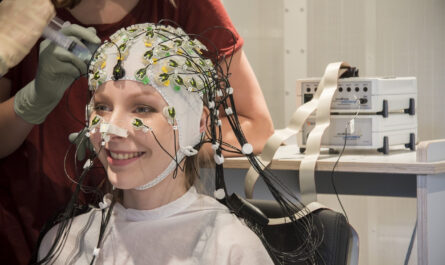A new study conducted by researchers from Washington University School of Medicine and the International Center for Diarrhoeal Disease Research in Bangladesh has found that the gut bacteria of malnourished children can benefit from key elements found in a therapeutic food. The study suggests that identifying these elements and the bacterial strains that process them can guide treatment with the current food formulation and potentially lead to the creation of more effective formulations in the future.
The study, published in Nature and led by Dr. Jeffrey I. Gordon, identified bioactive elements in a microbiome-directed food that could be recovered from byproduct streams of food manufacturing and used to produce prebiotics. The study also identified the microbes that process these food components, suggesting potential for these organisms to be part of a therapeutic intervention in children lacking beneficial gut microbes.
Building on this work, the World Health Organization and the Bill & Melinda Gates Foundation are supporting a large clinical trial investigating this new therapeutic food, called MDCF-2. The trial aims to enroll about 6,500 malnourished children living in Africa and Southeast Asia.
Malnutrition is a leading cause of death in children under the age of five, with nearly 150 million children suffering from stunted growth. While traditional therapeutic foods reduce deaths, they do not substantially improve other long-term effects of malnutrition, such as problems with metabolism, bone growth, immune function, and brain development.
The study by the research team at Washington University School of Medicine found that strains of the bacteria Prevotella copri were positively associated with increased growth in children. These bacteria showed increased activities of metabolic pathways that use bioactive carbohydrate structures present in the therapeutic food. Compared to children receiving a traditional therapeutic food, those receiving MDCF-2 showed higher levels of proteins supporting growth and lower levels of proteins involved in inflammation.
The MDCF-2 therapeutic food contains ingredients such as chickpea flour, soybean flour, peanut paste, and mashed green banana pulp. The traditional supplementary food, on the other hand, includes rice, lentils, and milk powder. Analysis of the carbohydrates in these foods showed that MDCF-2 contains more galactans and mannans, while the traditional therapeutic food contains more starch and cellulose.
The children receiving MDCF-2 showed increased growth despite the lower caloric density of the food compared to the traditional supplementary food. This increased growth was correlated with the increased expression of metabolic pathways in certain strains of Prevotella copri. Additionally, the study found that children who consumed more nuts and legumes in their regular diets, which contain similar polysaccharides as MDCF-2, had the greatest response to the therapeutic food. This suggests that there may be opportunities to adjust the composition and dose of MDCF-2 to enhance its therapeutic effect.
The upcoming clinical trials of MDCF-2 will test its effectiveness in malnourished children from six months to 24 months of age with varying degrees of malnutrition severity in East and West Africa and South Asia. These trials, along with other studies, will help researchers understand how gut microbes interact with human cells and organs and refine approaches for microbiome-directed therapeutics to ensure healthy microbiome formation in children during their early years of life.
*Note:
1. Source: Coherent Market Insights, Public sources, Desk research
2. We have leveraged AI tools to mine information and compile it



